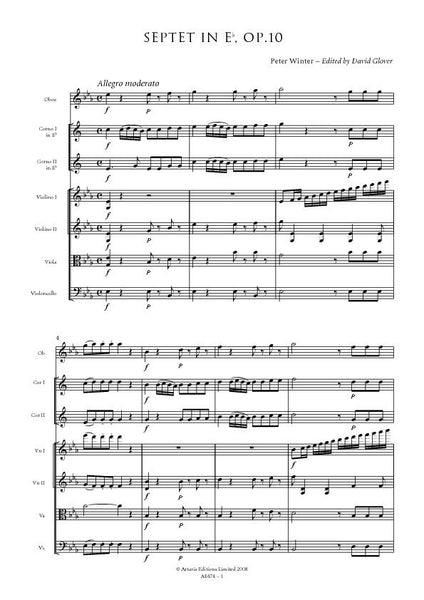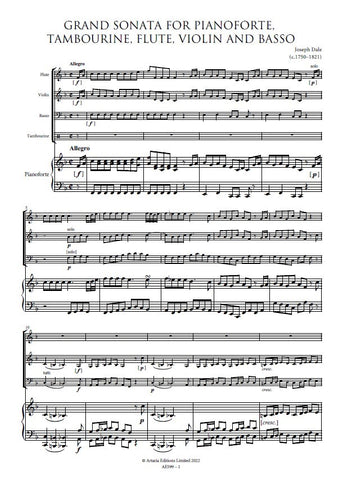Details
|
Peter Winter (1754-1825) is best known as an opera composer. Growing up at the Mannheim court, Winter was able to study with many of the court musicians although his formal composition studies seem to have been minimal. After the electoral court moved to Munich, Winter became director of the orchestra there. Unstable economic and political conditions in Munich reduced the demand for music at home and allowed him to compose operas for major centres such as Vienna, Milan, Paris, and London. Winter's major chamber works include ten quartets, four quintets, three sextets, a septet and an octet. These works fall into two groups. The first comprises works characterized by a melody-dominated texture, where the melody is assigned to a single instrument, usually the violin. The virtuosic nature of some of these works points to their having been composed for specific performers. The second group is written in a conversational style and includes some of the string quartets, the op. 6 string quintets, the sextets, the Septet and the Octet. Many of the larger works in this group include substantial parts for the horn, an instrument of which Winter was particularly fond. The Septet in E flat, published in 1803, is an arrangement of the String Quintet in E flat, published in 1802. The rescoring involves the addition of two horns and either an oboe or a clarinet at the expense of one viola. The viola melodies are assigned to the horns, while much of the violas' non-melodic material either stays with the remaining viola or is transferred to the second violin. The first violin part of the quintet is divided between the first violin and the oboe/clarinet parts of the septet, with the more lyrical passages going to the oboe/clarinet and the more technical ones remaining with the violin. The resulting wind parts are attractive and substantial; the horns introduce the opening theme and the oboe/clarinet rises to the equal of the first violin. The second violin and violoncello parts remain largely unchanged.
|














